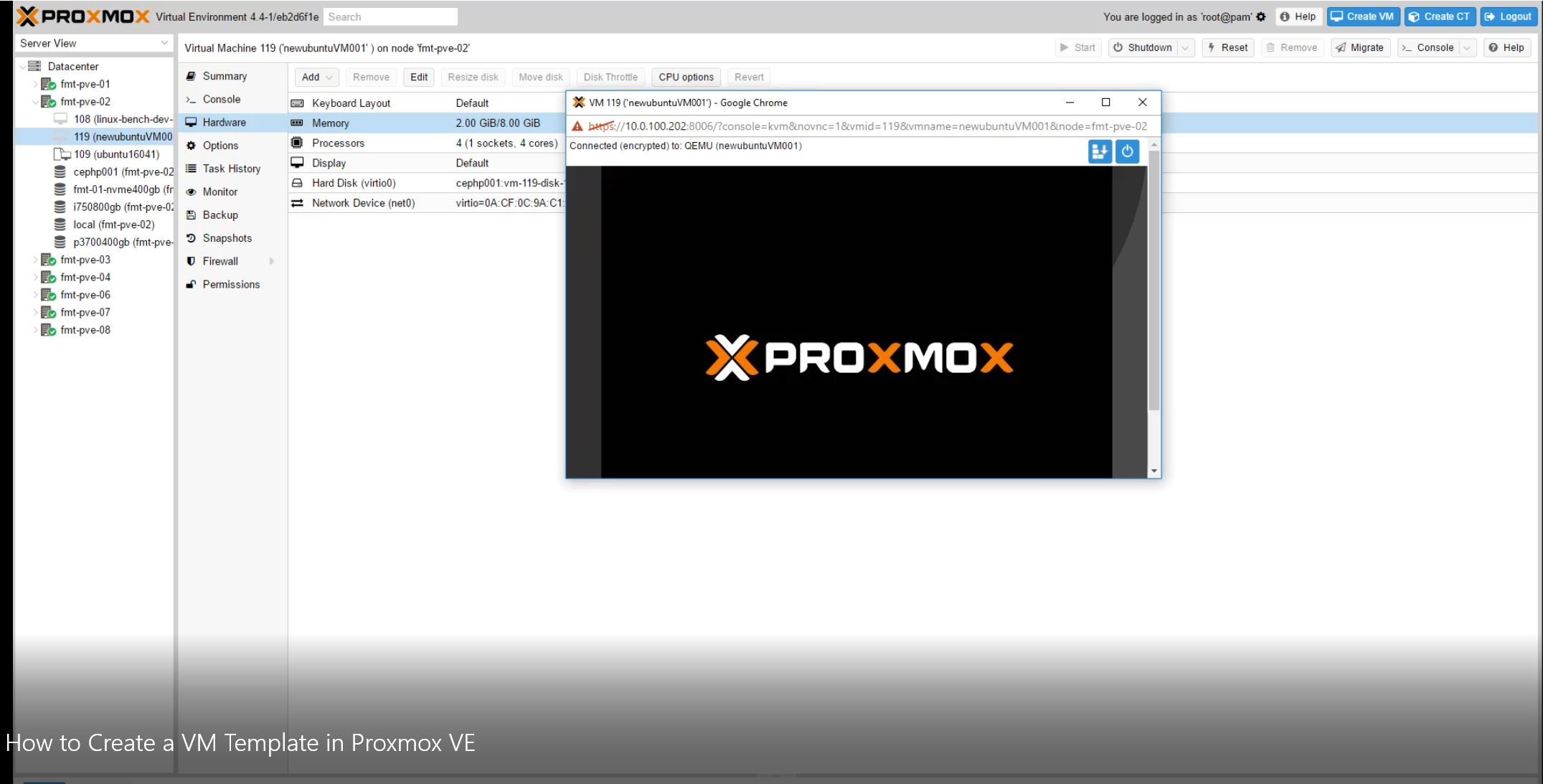In the STH forums a number of users utilize Proxmox VE as a virtualization platform. It is capable of using ZFS and Ceph storage back-ends. It has a nice GUI and clustering features which make using the platform very easy. Perhaps best of all, the solution is “free” so one can have cluster-wide hyper-converged KVM virtualization without paying high license costs. One of the key features to any virtualization solution is the ability to create VM templates. When you have a base VM that you may want to create many from in the future, using VM templates allows you to quickly deploy subsequent VMs.
Creating a Proxmox VE VM Template
To make things slightly more interesting, we made a quick video that walks one through the process. In about 5 minutes we show how to create a base Ubuntu 16.04 LTS VM, migrate that VM to another node in the cluster, convert the VM to a template and then deploy a new Ubuntu 16.04 VM based on the template. We also show a few tips such as removing the ISO image and using write-through cache to allow for easy live migration of the resulting images.
You can check out the video here:
Using templates can save several minutes or hours per VM in terms of setup. For example, if one is a WordPress developer that also hosts for their clients using “VPS” solutions, that developer can create a VM template with the OS and a basic WordPress installation. From there, that template can be re-used without having to go through all of the steps to re-create the environment each time.
Other hypervisor solutions such as VMware and Microsoft Hyper-V have similar functionality. Proxmox VE is nice because it has the lowest license cost (free if you do not purchase support) of the bunch.
Eagle-eyed readers will note that the first Proxmox VE node we are using in this demo video had uptime of over 370 days at the time this video was made. This cluster uses KVM virtualization along with Ceph and ZFS storage for a very low cost all flash hyper-converged hosting platform.




